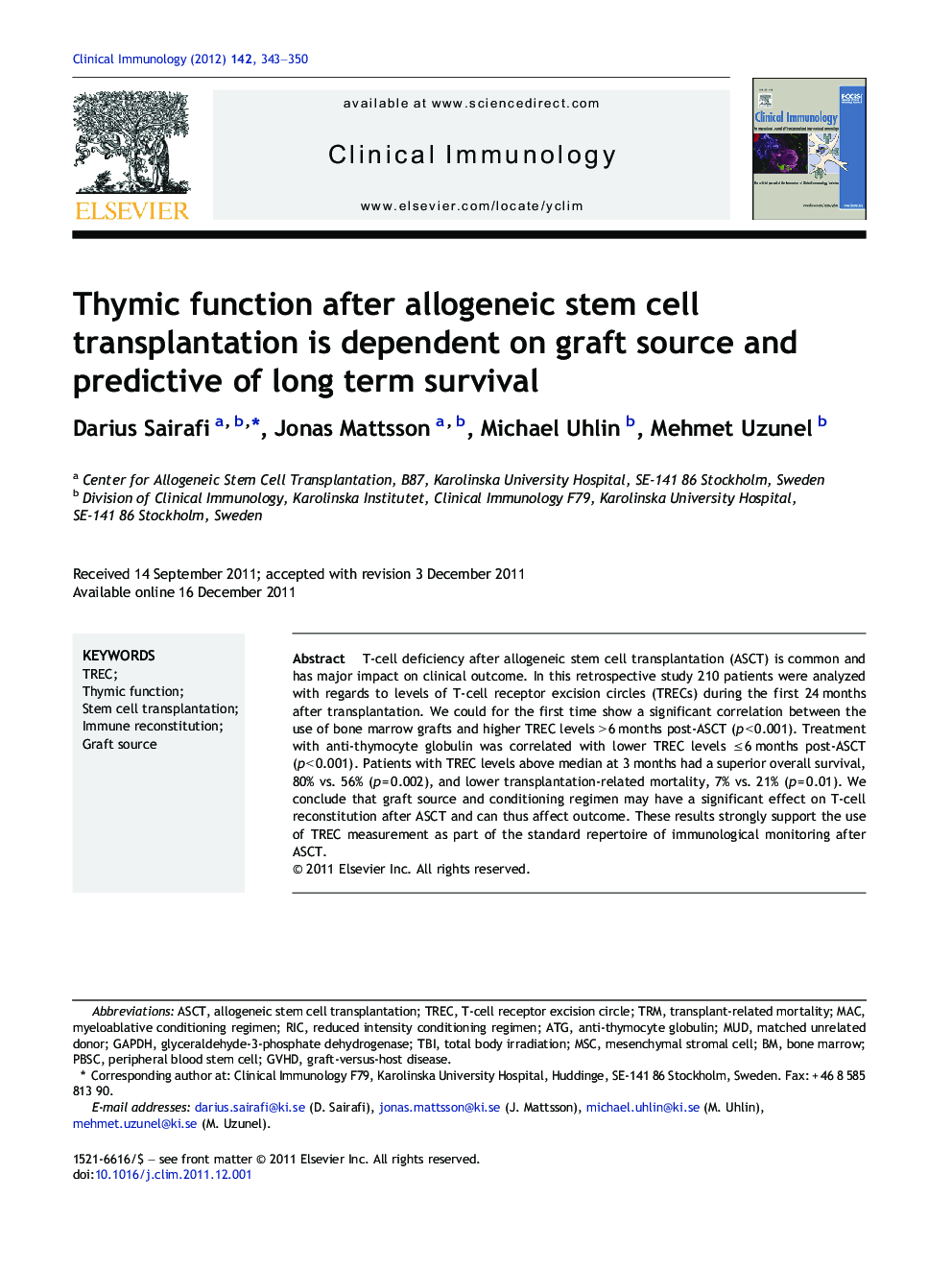| کد مقاله | کد نشریه | سال انتشار | مقاله انگلیسی | نسخه تمام متن |
|---|---|---|---|---|
| 3257174 | 1207395 | 2012 | 8 صفحه PDF | دانلود رایگان |

T-cell deficiency after allogeneic stem cell transplantation (ASCT) is common and has major impact on clinical outcome. In this retrospective study 210 patients were analyzed with regards to levels of T-cell receptor excision circles (TRECs) during the first 24 months after transplantation. We could for the first time show a significant correlation between the use of bone marrow grafts and higher TREC levels > 6 months post-ASCT (p < 0.001). Treatment with anti-thymocyte globulin was correlated with lower TREC levels ≤ 6 months post-ASCT (p < 0.001). Patients with TREC levels above median at 3 months had a superior overall survival, 80% vs. 56% (p = 0.002), and lower transplantation-related mortality, 7% vs. 21% (p = 0.01). We conclude that graft source and conditioning regimen may have a significant effect on T-cell reconstitution after ASCT and can thus affect outcome. These results strongly support the use of TREC measurement as part of the standard repertoire of immunological monitoring after ASCT.
► We evaluated recovery of thymic function in 210 cases after allogeneic stem cell transplantation.
► We measured levels of T-cell receptor excision circles (TRECs) at 6 time-points.
► Bone marrow as graft source was correlated to earlier recovery of TREC levels.
► T-cell depletion with ATG had a negative effect on TREC levels during the first 6 months after SCT.
► TREC levels above median at 3 months post SCT were correlated with improved survival.
Journal: Clinical Immunology - Volume 142, Issue 3, March 2012, Pages 343–350